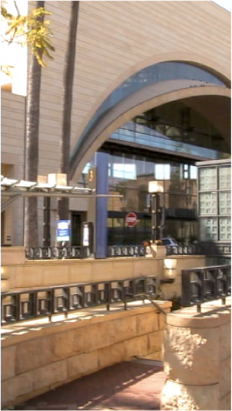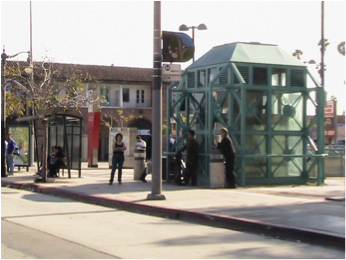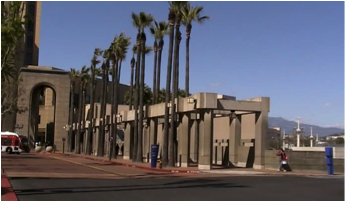Construction of subway rail entry points creates extensive disruption of surface activities and interference with traffic for an extended construction period. The portions of deep subway tunnel alignments generally can be constructed with little impact on surface activities. Unless there are localized geologic and excavation problems, subway tunnel construction and operation of subway systems do not have permanent or perceptible impacts on the surface environments and settings.
 The proposed alignment of the westerly extension of the L.A. Metrorail Red Line subway passes through known geologic and soil conditions subject to specific issues including geologic instability, high water table, groundwater flooding, and the presence of toxic, flammable, explosive, oxygen displacing, or otherwise unsafe gasses. Modern engineering technology can overcome these problems, at greater costs, and with some level of ongoing risk. In addition to natural hazards, the enclosed environments of subways subject passengers and operators to greater risk of terrorist and other violent or biological attacks.
The proposed alignment of the westerly extension of the L.A. Metrorail Red Line subway passes through known geologic and soil conditions subject to specific issues including geologic instability, high water table, groundwater flooding, and the presence of toxic, flammable, explosive, oxygen displacing, or otherwise unsafe gasses. Modern engineering technology can overcome these problems, at greater costs, and with some level of ongoing risk. In addition to natural hazards, the enclosed environments of subways subject passengers and operators to greater risk of terrorist and other violent or biological attacks.
 The construction of major subway stations, usually using the cut and cover technique or open pit excavation, as in L.A. Metrorail Redline station construction, disrupts the surface area from curb to curb for up to 500 feet along major streets. This construction virtually shuts down businesses and disrupts other uses adjacent to the station sites for periods up to one year. Many of the adjacent businesses fail, and most are negatively impacted by extended subway station construction. In some cases, construction activities undermine or destabilized adjacent building foundations and public works infrastructure.
The construction of major subway stations, usually using the cut and cover technique or open pit excavation, as in L.A. Metrorail Redline station construction, disrupts the surface area from curb to curb for up to 500 feet along major streets. This construction virtually shuts down businesses and disrupts other uses adjacent to the station sites for periods up to one year. Many of the adjacent businesses fail, and most are negatively impacted by extended subway station construction. In some cases, construction activities undermine or destabilized adjacent building foundations and public works infrastructure.
 Once construction is completed, subway infrastructure, stations and operations pose little, if any disruptive or negative impacts on surrounding settings or traffic conditions. Under normal operating conditions, subways provide effective, nonintrusive transportation services to all passengers able to access and effectively use the system.
Once construction is completed, subway infrastructure, stations and operations pose little, if any disruptive or negative impacts on surrounding settings or traffic conditions. Under normal operating conditions, subways provide effective, nonintrusive transportation services to all passengers able to access and effectively use the system.




